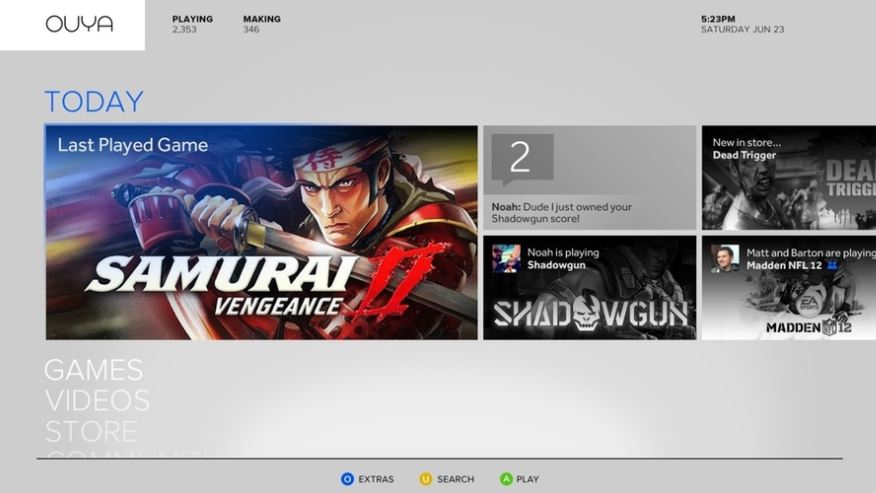The future is bright, sunrise orange bright.
If you’re reading this, then you’ve seen that we just launched the brand new [a]list daily. There’s this spiffy new web site but it’s more than a re-brand. We’re expanding the daily after four years of steady growth. All of it has been on the back of word of mouth by you, our readers, which we like to believe has something to do with the content we’ve delivered.
Our expansion is two-fold. First and foremost, we’ve grown our staff with the addition of Steve Peterson, west coast editor for GamesIndustry.biz and now senior editor for [a]list daily. Peterson brings decades of experience to the role, starting out his career in game design, then in senior marketing roles, and most recently as GamesIndustry.biz’s go-to writer for marketing coverage. You might think Peterson has been preparing himself throughout his career to become an editor at a game and entertainment marketing B2B outlet like ours. We’re thrilled to have him.

Saffron yellow is so 2009.
Our new site reflects the other side of our growth, designed around what we expect to be consistent delivery of higher caliber content. Since Peterson joined our team in May, we’ve expanded our slate with more frequent feature and analysis stories. Expect that to continue. We now have a solid series of exclusive columns, partnering with data firms and analysts to cover digital sales and retail game preorders. We’re broadening our coverage of what’s worth highlighting in advertising, marketing and social media. We will consistently look beyond games where other brands are doing things worth noting because they can influence game marketing, or where they’ve been influenced by game culture. We’re also implementing a couple of handy resources for readers with events and job listings. Last but certainly not least, the new site is mobile and tablet friendly.
Most importantly, we’ll be continuing the unique slant of coverage that we think readers have come to rely on with [a]list daily. That is, the insight that our editorial staff and contributing writers can provide on how changes in the game industry affect the way products are marketed and sold.
The game industry is in constant flux. It should be. It has a unique place in this world of ours, residing at the intersection of art, technology and entertainment. Perhaps more than anything else outside of politics and warfare, these are the three forces that are shaping who we are as a society. Looking at the industry historically, amidst that constant flux have been moments when there’s a collective breath before the next big leap forward. It feels as if we’re at the apex of another one of these moments.
Here’s how Peterson sees it: “The game industry is in a time of rapid expansion and sweeping changes, with new business models and new platforms bringing games to people worldwide. Marketing games is a challenge in this environment; you have to be as creative in marketing as you are in game design if you want to succeed.”
The past few years have been about taking breaths as we looked at how online gaming, then digital distribution, then social media, then smart mobile devices each changed the industry in its own way. They didn’t just change the way people play games and what they play. They changed the way the industry needs to do business. The same media and technology shifting peoples’ gaming habits have also affected how game companies need to market products, and even who now has to be part of the marketing process.

Steve Peterson, red with writing fury.
“We’ve seen a tremendous growth in the number of game developers and publishers as barriers to entry and distribution have fallen, particularly on mobile platforms,” says Peterson. “With thousands of games launching every week, the biggest challenge is discovery — and that’s a marketing challenge.”
That’s where the [a]list daily comes in. Ayzenberg launched this newsletter into a very different world in 2009. It was a time when the game industry waited each month for one set of numbers, NPD’s retail sales reports, to define its health. [a]list daily saw things differently, spurred along by the brain trust in an ad agency that foresaw the coming changes from a marketing perspective. In large part it was thanks to forward-looking companies who enlisted it to help market what at first seemed like fringe products — digitally distributed MMOs, social games, mobile games, free-to-play games. We covered these categories and genres early on, recognizing they posed business and marketing challenges. As they became a bigger part of what the industry defines itself around, we’ve tried to stay on top, if not ahead, of what game makers and marketers need to know. That will remain our mission.
Finally, connect with us.
We’ve grown sizable, and active, communities on Twitter, Linked In and Facebook with content that you don’t get through the site.
If you’ve got an informative, thought-provoking or just plain amusing idea that you feel is fit for the daily, or if you have feedback to share, we always want to hear about it. Post a comment if you don’t mind everyone knowing about it. If you want to talk with us directly, check out our masthead at the bottom of the site. We’re all accessible.
 Saffron yellow is so 2009.
Saffron yellow is so 2009.
 Steve Peterson, red with writing fury.
Steve Peterson, red with writing fury.




